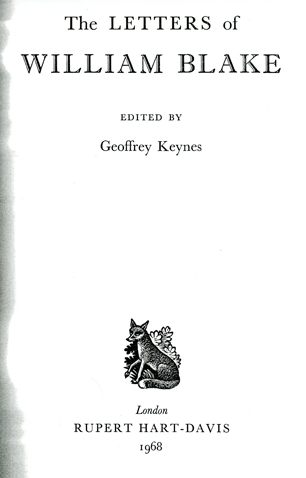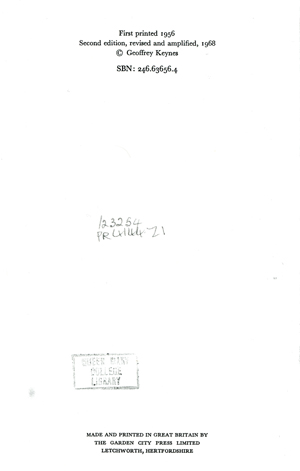Exercise 9: A Book (of letters)
A book of letters can mostly be cited in the same way as an edition of a primary text. It is, however, helpful to your reader to cite the date of the letter, as well as the specific page of the volume. The date can be included in parentheses at the end of the footnote. For instance:
The Letters of Stephen Leacock, ed. by David Staines (Ontario: Oxford University Press, 2006), p. 149 (16 November 1922).
Exercise


For this exercise, imagine you wanted to cite a letter sent on 23 September 1800 on page 42 of this book:
Correct footnote:
Your footnote above should look like this:*The Letters of William Blake*, ed. by Geoffrey Keynes, 2nd edn (London: Rupert Hart-Davis, 1968), p. 42 (23 September 1800).In your own work, the same footnote would look like this:
The Letters of William Blake, ed. by Geoffrey Keynes, 2nd edn (London: Rupert Hart-Davis, 1968), p. 42 (23 September 1800).
Comment:
While adding the date is helpful, it would not be incorrect to present this footnote as:
*The Letters of William Blake*, ed. by Geoffrey Keynes, 2nd edn (London: Rupert Hart-Davis, 1968), p. 42.
The author field is left blank here. The MHRA suggests that when you include such a volume in your bibliography, you alphabetise it by the editor's surname. So in this case, you would have:
Keynes, Geoffrey, ed., The Letters of William Blake, 2nd edn (London: Rupert Hart-Davis, 1968)
However, if you are citing many other works by William Blake, it may be more appropriate to alphabetise this letter collection alongside Blake's other works. For instance:
Blake, William, The Letters of William Blake, ed. by Geoffrey Keynes, 2nd edn (London: Rupert Hart-Davis, 1968)

